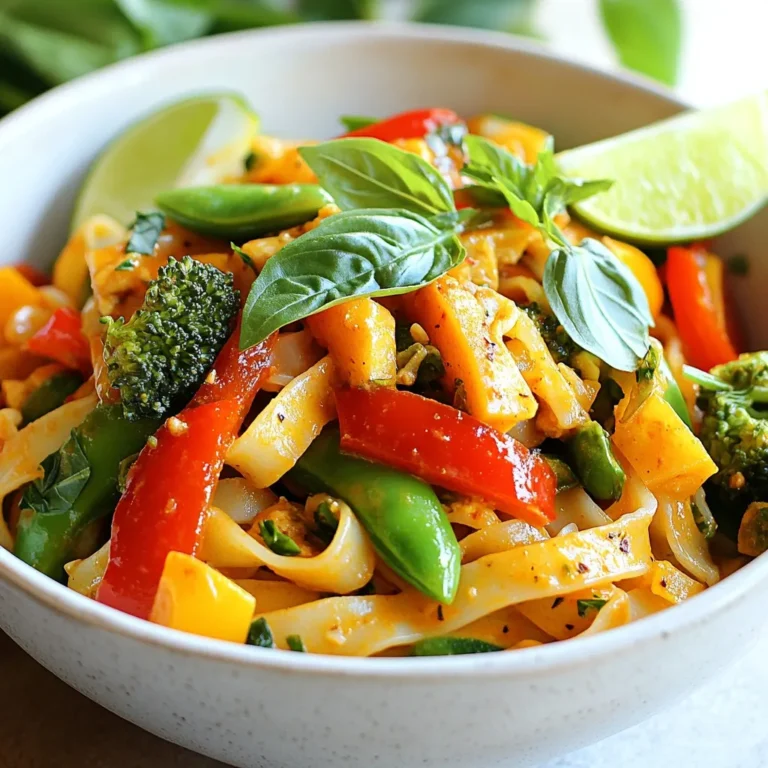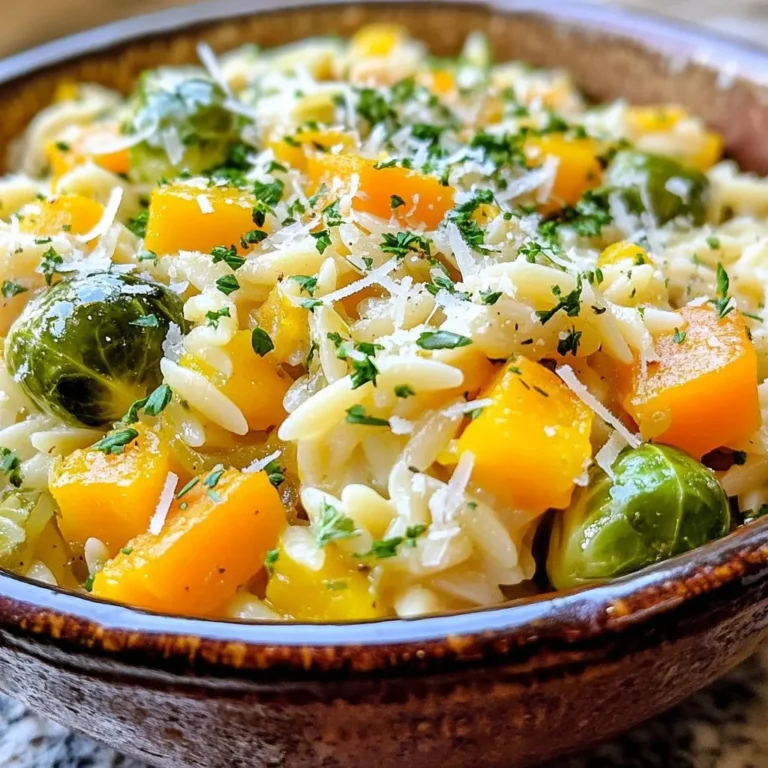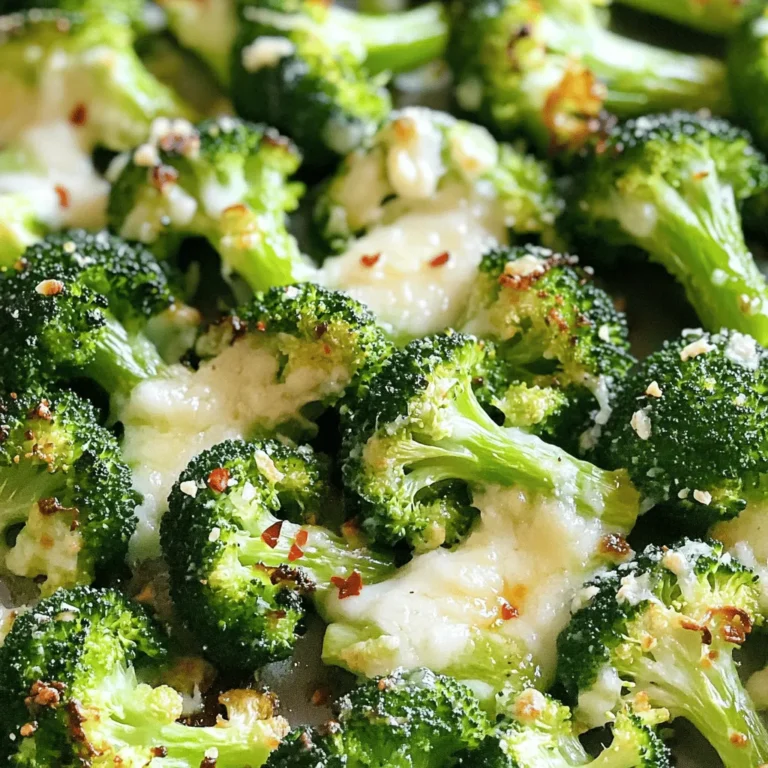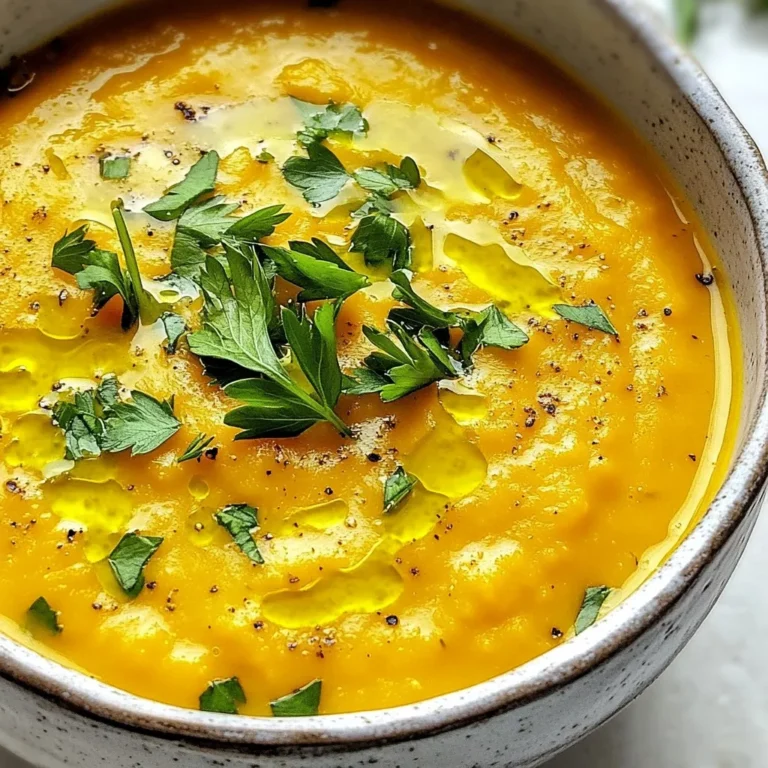Easy Frittata Recipe Simple and Flavorful Meal
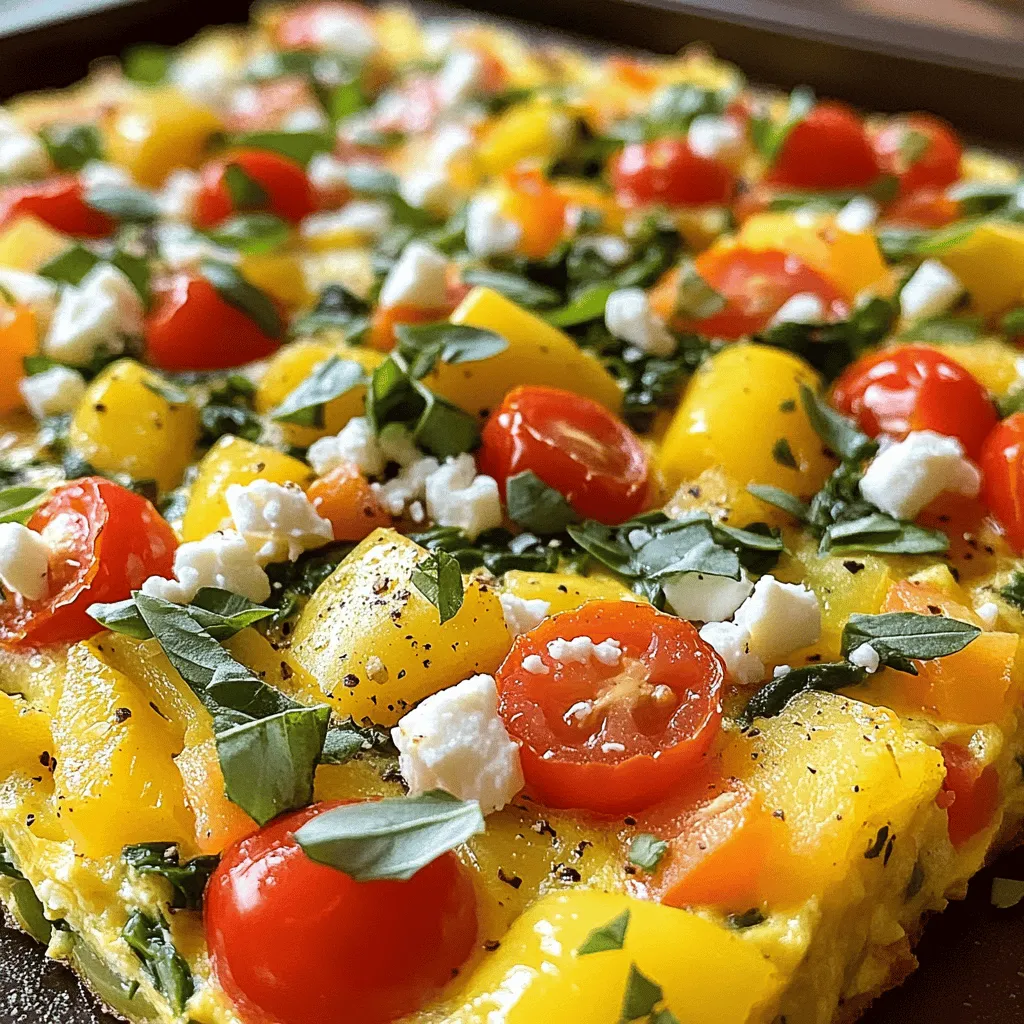
If you’re looking for a quick and tasty meal, this easy frittata recipe is for you! It’s simple to make and packed with flavor. I’ll guide you step-by-step to create a dish that’s perfect for breakfast, lunch, or dinner. Whether you want to stick with classic ingredients or try fun substitutes, this recipe has it all. Let’s dive in and make a delicious frittata together!
Ingredients
Complete List of Ingredients
To make a veggie-packed frittata, you’ll need:
– 6 large eggs
– 1/2 cup milk (plant-based milk can be used as a substitute)
– 1 cup bell peppers, diced (a colorful mix of red, yellow, and green)
– 1 cup baby spinach, roughly chopped
– 1/2 cup cherry tomatoes, halved
– 1/4 cup red onion, finely diced
– 1/2 cup feta cheese, crumbled (or any favorite cheese)
– 1 tablespoon olive oil
– Salt and freshly cracked black pepper to taste
– Fresh herbs for garnish (such as basil or parsley)
Possible Substitutions
You can swap ingredients based on what you have:
– Use any cheese you like, such as cheddar or goat cheese.
– Change the veggies to mushrooms, zucchini, or kale.
– For a dairy-free option, replace milk with almond milk or oat milk.
– If you want more protein, add cooked sausage or diced ham.
Recommended Tools and Equipment
Having the right tools makes cooking easier:
– A 9-inch oven-safe skillet or baking dish for cooking the frittata.
– A large mixing bowl for whisking the eggs and milk.
– A spatula for mixing and serving.
– A whisk for blending the egg mixture smoothly.
– A knife and cutting board for chopping veggies.
These ingredients and tools will let you create a tasty frittata.
Step-by-Step Instructions
Prepping the Oven and Skillet
First, I preheat the oven to 375°F (190°C). This step is key to cooking the frittata evenly. Next, I lightly grease a 9-inch oven-safe skillet with olive oil. This helps prevent sticking.
Mixing the Eggs and Seasoning
In a large bowl, I whisk together 6 large eggs and 1/2 cup of milk. A pinch of salt and a few cracks of black pepper add flavor. I mix until it looks frothy. This egg mixture forms the base of our frittata.
Cooking the Vegetables
I heat olive oil in the greased skillet over medium heat. I add 1/4 cup of finely diced red onion first. After about 2-3 minutes, it turns clear and fragrant. Then, I throw in 1 cup of diced bell peppers. I sauté them for another 2-3 minutes. Finally, I add 1 cup of chopped spinach and 1/2 cup of halved cherry tomatoes. I stir gently until the spinach wilts.
Combining Ingredients
Once the veggies are cooked, I pour the egg mixture over them. Using a spatula, I carefully lift the vegetables to mix. I want to ensure even coverage. Next, I sprinkle 1/2 cup of crumbled feta cheese on top.
Baking the Frittata
I let the frittata cook on the stove for 2-3 minutes. I watch for the edges to set. Then, I carefully transfer the skillet to the oven. I bake for 15-20 minutes. The frittata should puff up and the center should set. After baking, I let it cool for a few minutes. I slice it into wedges and serve warm. A sprinkle of fresh herbs makes it look nice. This is a simple and flavorful meal!
Tips & Tricks
Achieving the Perfect Texture
For a great frittata, focus on the eggs. Whisk them well with milk until frothy. This helps create a light, airy texture. Don’t overcook the frittata, as it can become dry. Bake it just until set in the center. Check it often toward the end of cooking.
Flavor Enhancements
Add depth to your frittata with spices. Try a pinch of smoked paprika or a dash of cayenne for heat. Fresh herbs also make a big difference. Basil, chives, or parsley brighten the dish. You can even add a splash of hot sauce for extra flavor.
Garnishing Ideas
Presentation matters! After slicing, sprinkle fresh herbs on top. This adds color and freshness. Serve with a side salad for a vibrant plate. You can also drizzle olive oil on top for richness. A few slices of avocado can enhance the meal’s appeal.
Using these tips, you can make your frittata not just tasty, but also beautiful.
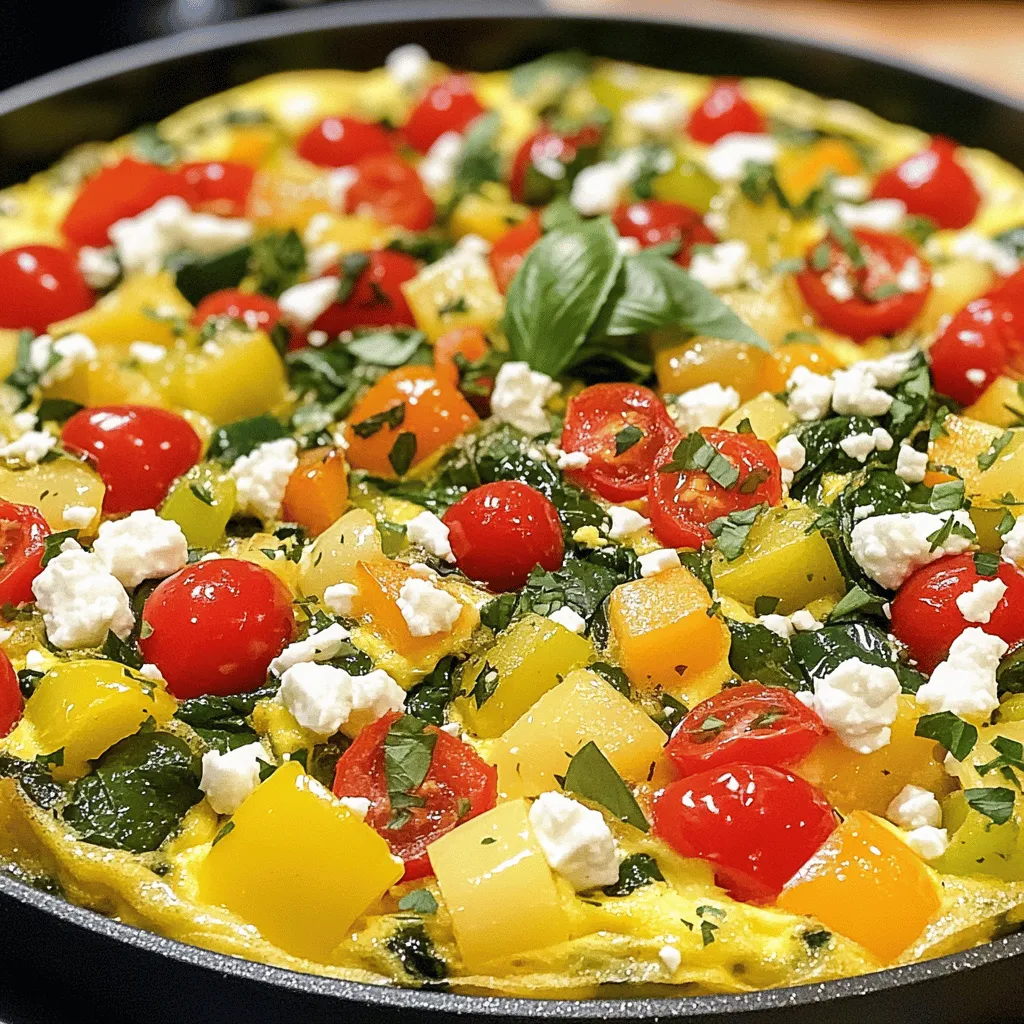
Variations
Different Vegetables to Use
You can change the veggies in your frittata to suit your taste. Try using zucchini, mushrooms, or broccoli. These add great flavor and texture. For a spicy kick, add jalapeños or red pepper flakes. You can also use seasonal vegetables, like asparagus in spring. The more colorful the mix, the more fun your frittata will look!
Cheese Alternatives
Feta cheese is delicious, but you can swap it out easily. Try cheddar, mozzarella, or goat cheese. Each cheese brings a unique flavor. If you want a dairy-free option, use vegan cheese or nutritional yeast. This will keep your frittata creamy and tasty without dairy.
Adding Proteins (like sausage or bacon)
Want to make your frittata heartier? Add proteins like sausage or bacon. Cook them first, then mix them in with the veggies. For a healthier option, use turkey sausage or diced ham. You can also add beans for a vegetarian protein boost. This adds flavor and makes your meal more filling.
Storage Info
Best Practices for Storing Leftovers
After enjoying your frittata, you might have some leftovers. To keep it fresh, let it cool down to room temperature. Then, wrap the frittata tightly in plastic wrap or place it in an airtight container. This keeps moisture in and prevents it from drying out. Store it in the fridge for up to four days. When you want to eat it again, you’ll have a tasty meal ready.
Reheating Instructions
To reheat the frittata, you can use the oven or microwave. For the oven, preheat it to 350°F (175°C). Place the frittata on a baking sheet and cover it with foil. Bake for about 10-15 minutes, or until it’s warm. If you choose the microwave, cut the frittata into slices. Heat each slice on a microwave-safe plate for 30-60 seconds. Be careful not to overheat, or it may get rubbery.
Freezing the Frittata
You can also freeze your frittata for later. Cut it into slices and wrap each slice in plastic wrap. Then, place them in a freezer-safe bag. Make sure to label the bag with the date. The frittata can stay in the freezer for up to three months. When you’re ready to eat, thaw it in the fridge overnight. Then, reheat using the instructions above. Enjoy a quick meal that tastes fresh!
FAQs
How Do You Know When the Frittata is Done?
You can tell the frittata is done when the center is set and no longer jiggles. The edges should look firm and slightly golden. A toothpick inserted in the middle should come out clean. If it’s still wet, bake it a few more minutes. Keep an eye on it to avoid overcooking.
Can You Make a Frittata Ahead of Time?
Yes, you can make a frittata ahead of time. It holds well in the fridge for about 3 to 4 days. Just let it cool, cover it tightly, and store it. You can reheat it in the oven or microwave when ready to eat. This makes it great for meal prep or brunch gatherings.
What’s the Difference Between a Frittata and an Omelette?
The main difference lies in how they are cooked. An omelette is folded and cooked quickly on the stovetop. A frittata cooks slowly and is often finished in the oven. Frittatas use more filling and are thicker than omelettes. This makes them perfect for feeding a group.
How to Customize Frittata for Dietary Restrictions?
To customize a frittata, swap ingredients based on dietary needs. For dairy-free, use plant-based milk and cheese. Add extra veggies for gluten-free options. If you’re vegan, replace eggs with a chickpea flour mixture. Always check labels for allergens. This way, everyone can enjoy a slice!
This blog post covered essential ingredients and tools for your frittata. I shared step-by-step instructions to make cooking easy. Plus, I offered tips for perfecting texture and flavor. You learned about fun variations with veggies and proteins. Finally, I explained best storage practices to keep leftovers fresh.
Embrace your creativity as you cook. Enjoy your frittata and impress everyone at your table!
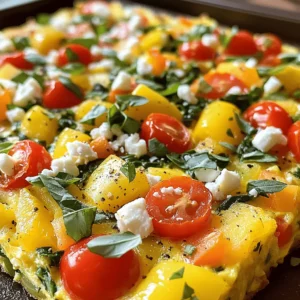
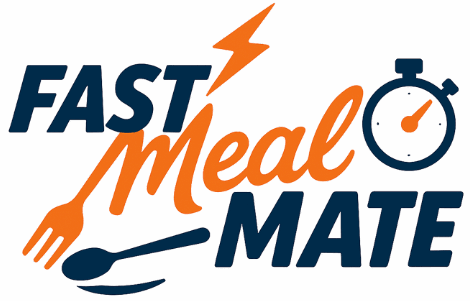
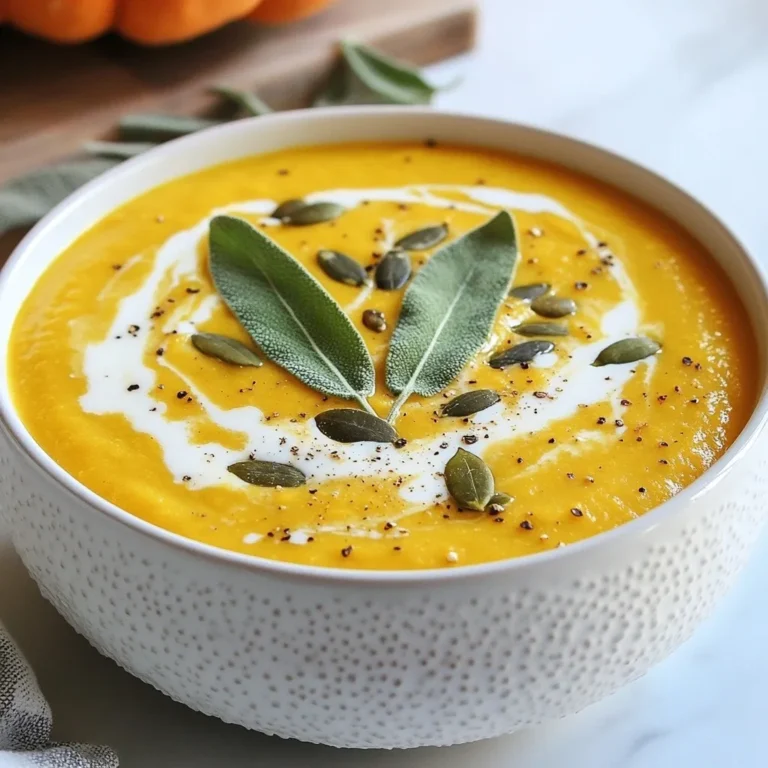
![To make Spicy Honey BBQ Sausage Pasta Skillet, you need some key items. Here’s what you will use: - 8 oz penne pasta - 2 tablespoons olive oil - 1 lb spicy Italian sausage, casings removed - 1 medium onion, diced - 3 cloves garlic, minced - 1 bell pepper (red or yellow), diced - 1 cup corn kernels (fresh or frozen) - 1 cup cherry tomatoes, halved - 1/2 cup BBQ sauce - 2 tablespoons honey - 1 teaspoon crushed red pepper flakes - Salt and pepper to taste You can add extra flavor or texture with these ingredients: - Chopped fresh parsley for garnish - Grated Parmesan cheese for serving To prepare this dish, you will need a few handy tools: - Large pot for boiling pasta - Large skillet for cooking sausage and veggies - Colander for draining pasta - Spatula for mixing and breaking up sausage Start by boiling a large pot of salted water. Once it reaches a rolling boil, add 8 oz of penne pasta. Cook it for about 8-10 minutes until it is al dente. Drain the pasta in a colander and set it aside for later. In a large skillet, heat 2 tablespoons of olive oil over medium heat. When the oil shimmers, add 1 lb of spicy Italian sausage. Break the sausage apart with a spatula. Cook until it browns nicely, which should take around 5-7 minutes. Add 1 diced medium onion and 1 diced bell pepper to the skillet. Stir everything together and sauté for about 3-4 minutes. This will help the veggies soften. Then, add 3 minced garlic cloves and cook for another 1-2 minutes until the garlic smells amazing. Next, stir in 1 cup of corn kernels and 1 cup of halved cherry tomatoes. Pour in 1/2 cup of BBQ sauce and 2 tablespoons of honey. Sprinkle in 1 teaspoon of crushed red pepper flakes for heat. Mix it all well and let it simmer for about 5 minutes. This helps the flavors blend together. Once the sauce is bubbling, add the cooked penne pasta to the skillet. Toss everything gently until the pasta is coated with the sauce. Taste it, and adjust the seasoning with salt and pepper as you like. Take the skillet off the heat. Garnish your dish with chopped fresh parsley for a burst of color. If you want, add some grated Parmesan cheese on top. Serve hot and enjoy your Spicy Honey BBQ Sausage Pasta Skillet! For the full recipe, check [Full Recipe]. To get the right heat, start with the crushed red pepper flakes. I suggest using one teaspoon first. You can always add more if you want extra kick. Taste as you go. This dish should be spicy but not overpowering. Adjust it to suit your taste buds. Seasoning is key. Use salt and pepper to bring out the flavors. I often add a dash of garlic powder for extra depth. Fresh herbs like parsley can brighten the dish. Don’t forget to taste before serving. A little tweak can make a big difference. Cooking times can vary based on your stove. When cooking the sausage, look for a golden brown color. For the veggies, aim for a soft texture without losing crunch. The pasta should be al dente. Always keep an eye on your skillet. This way, you won’t overcook any ingredients. For the full recipe, check out the complete list of steps. {{image_4}} You can easily switch out ingredients in this dish. If you can't find spicy Italian sausage, use any sausage you like. Chicken sausage or turkey sausage works well too. For a lighter option, try ground turkey or beef. If you're vegan, use plant-based sausage. Honey can be swapped for maple syrup for a different sweet touch. You can also use low-sugar BBQ sauce if you're watching your sugar intake. Penne pasta is great, but many other options exist. Try fusilli or rigatoni for fun shapes. Gluten-free pasta works too if you need it. You can also use whole wheat pasta for added fiber. Just keep an eye on cooking times, as they may vary. Want to boost the nutrition? Add more veggies! Spinach or kale can wilt nicely into the dish. You can toss in zucchini or mushrooms for added flavor. Carrots or peas can add sweetness too. Feel free to get creative with what you have on hand. Each choice adds color and nutrients, making the meal even better. For the full recipe, check out the Spicy Honey BBQ Sausage Pasta Skillet! After you enjoy your Spicy Honey BBQ Sausage Pasta Skillet, let any leftovers cool. Transfer them to an airtight container. You can keep it in the fridge for up to three days. Make sure to seal the container well. This keeps the flavors fresh and tasty. To reheat, simply take the pasta out of the fridge. Place it in a skillet over medium heat. Add a splash of water or broth to keep it moist. Stir often until it’s heated through. You can also use a microwave. Heat it in short bursts, stirring in between. This way, it warms evenly. If you want to store the dish for longer, freezing is a great option. Let the pasta cool completely first. Then, put it in a freezer-safe container. You can also use freezer bags. Just remove as much air as possible. It can last up to three months in the freezer. When you're ready to eat, thaw it overnight in the fridge before reheating. It makes for a quick meal later! For the full recipe, check out the details above. Yes, you can use different types of sausage. If you prefer mild flavors, use sweet Italian sausage. Chicken or turkey sausage also works well. You can even try smoked sausage for a unique twist. Just make sure to cook it fully before mixing it with the pasta. To kick up the heat, add more crushed red pepper flakes. You can also use spicy BBQ sauce instead of regular BBQ sauce. Adding diced jalapeños or a splash of hot sauce will give your dish extra spice. Adjust the heat to match your taste. This dish pairs well with a simple green salad. Garlic bread is great for sopping up the sauce. You can also serve it with roasted vegetables or a side of coleslaw for a crunchy contrast. Each adds a nice touch to your meal. Yes, you can make a vegetarian version easily. Substitute sausage with plant-based sausage or diced mushrooms. Use vegetable broth instead of meat-based sauces. You can also add more veggies like zucchini or spinach for extra flavor. This keeps the dish hearty and satisfying. For the full recipe, visit the section above. Now you know how to make a tasty Spicy Honey BBQ Sausage Pasta Skillet. We covered essential and optional ingredients, cooking tools, and step-by-step instructions. You learned tips for spice levels and enhancing flavors. We also explored variations, storage info, and common questions. I hope you'll try this dish at home. Enjoy experimenting with the flavors and making it your own! Happy cooking!](https://fastmealmate.com/wp-content/uploads/2025/07/3417b746-2870-404b-8959-e56c3fc8d9c9-768x768.webp)
